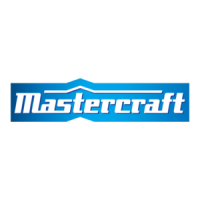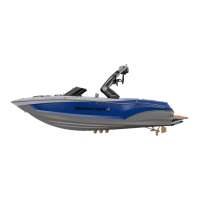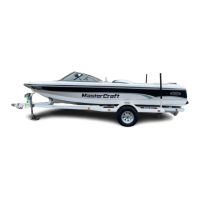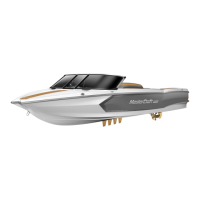417
/
2023 OWNER’S MANUAL
will seldom cure the problem. Any worn
component that connects the wheel
to the trailer (wheel bearings, springs,
bushings, etc.) can cause this condition.
Worn components should be adjusted
or replaced with new ones. The worn tire
should be balanced and possibly moved
to a dierent location on the trailer.
Occasionally, wheels that are out of balance
will wear like this, but wheel imbalance
usually shows up as bald spots between
the outside edges and center of the tread.
Second-Rib Wear
Second-rib wear is normally found only
in radial tires, and appears where the
steel belts end in relation to the tread.
Normally, it can be kept to a minimum by
paying careful attention to tire pressure
and frequently rotating the tires. Some tire
manufactures consider a slight amount
of wear at the second rib of a radial tire to
be normal, but excessive amounts of wear
indicate that the tires are too wide for the
wheels. Be careful when having oversized
tires installed on narrow wheels.
One side wear
In instances where an inner or outer rib
wears faster than the rest of the tire, there
may be a need for a realignment of the
tires. This occurs when there is excessive
camber in the axle, causing the wheel to
lean too much to the inside or outside
and putting too much load on one side of
the tire. The trailer may simply need the
wheels aligned, but misalignment could
be due to sagging springs, overloaded
trailer or an unbalanced load on multi-axle
trailers. Because load has a great eect
on alignment, be sure the trailer is loaded
to balance the weight on the axle or axles.
Trailers should be towed with the trailer
level, this is particularly important with
independent suspension trailers using
torsion axles.
Cupping
Cups or scalloped dips appearing around
the edge of the tread on one side or
the other almost always indicate worn
(sometimes bent) suspension parts.
Adjustment of wheel alignment alone

